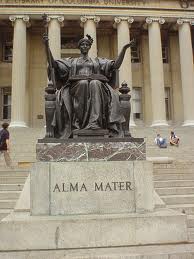World War
In 1645, Fernando III, heir to the Holy Roman Empire, saw with concern how their forces were defeated at the Battle of Jankau (now Czech Republic) to the French and Swedish troops led by Lennart Torstensson. With this victory, it was difficult for his enemies forced in 1647 to Maximilian I, King of Bavaria, to break his alliance with Holy Roman Empire. This virtually marked the end of War of 30 years. Distant times it was simply a war of beliefs, had now become a conflict in which the territorial interests were everything. With its recent impetus, a joint effort of the different lands Habsburg (Austria, Spain, Northern Italy and Germany) could not achieve victory in battles or Zusmarhausen and Lens. In bankruptcy, and annoyed by the terrible French pressure, had to negotiate access.
The End of a long conflict Peace of Westphalia, a treaty whose impact was decisive for the future of the Western world, it's like is referred to two specific agreements reached in the cities of Osnabruck and Munster (Germany) in 1648, one on May 15 and the other on 24 October. Under these agreements, putting an end to the war between the warring states and concluded that the confrontation was facing 80 years in Spain with the Republic of the Seven Netherlands. However, the main direct consequence was the weakening of the position of Austria and Spain and the strengthening of France (represented by Cardinal Mazarin) who earned numerous territories on its eastern border, including Metz and Alsace. It was not the only beneficiary. Brandenburg, through the mediation of France (which sought to promote a power in northern Germany which restores the balance with Austria) annexed many territories and formed the core of what the coming decades would be the kingdom of Prussia. United Provinces also small achieved the ultimate recognition of their independence, and Sweden became the greatest power in northern Europe Denmark to corner making their continental space. As we see, the scope of this treaty reconfigure the entire European organization. Hence its immense importance.
The consequences of Westphalia went beyond a mere territorial adjustment. Human lives and material destruction was perhaps as big as a World War. During the course of it, for example, the population of the Holy Roman Empire was reduced by 30%. In Brandenburg reached 50%, and in other regions including two thirds of the total. The male population in Germany was reduced by half. In the Czech lands the population fell by one third due to war, hunger, disease and mass expulsion of Protestant Czechs. Swedish armies alone destroyed during the 2000 war castles, 18,000 villages and 1,500 towns in Germany. Finally, the old idea that the Emperor and the Pope could mediate in the affairs of Christendom, was exterminated, and the idea of succeeding French State, which was rejected by the interference by foreign powers in the internal affairs of the kingdom. The papacy was thus definitively separated from the participation that had held in the European policy decisions, and the Empire became an institution expires.




